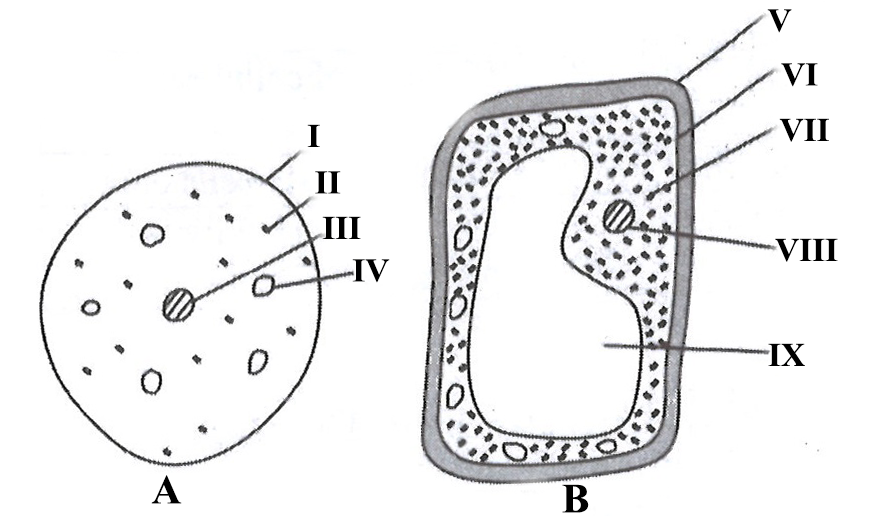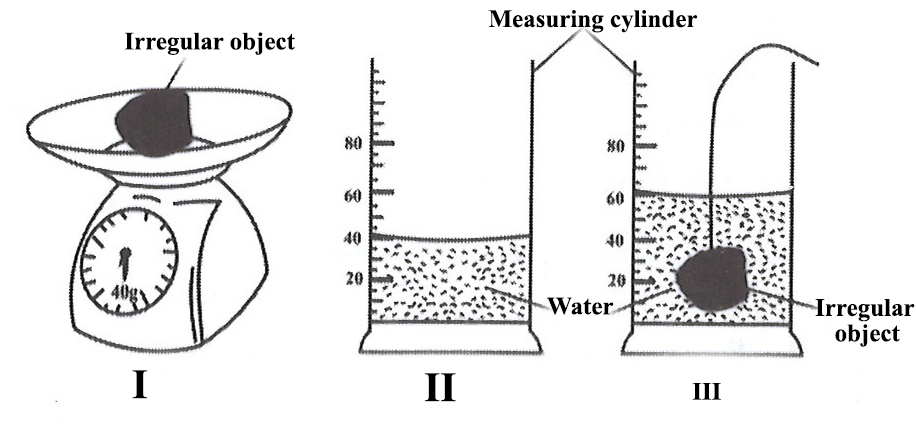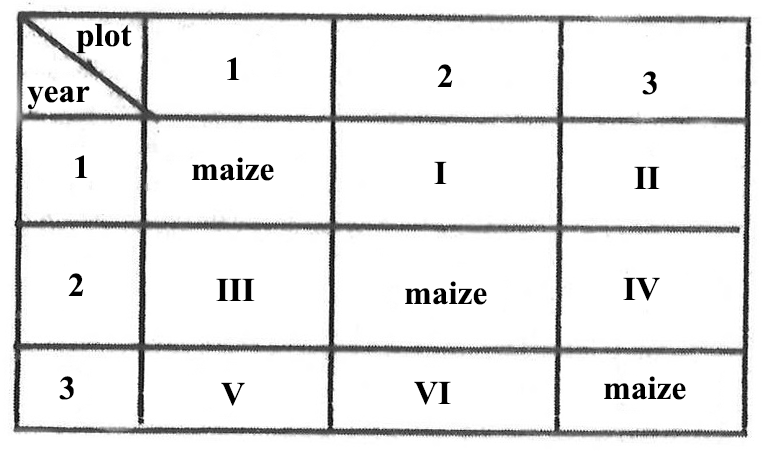ESSAY
This paper is in two parts: I and II. Answer Question 1 in part I and any other four question in part II
PART I
[40 marks]
Answer all of Question 1
-
The diagram below are illustrations of two cells labelled A and B
Study the diagram carefully and answer the questions that follow.

-
Name each of the parts labelled I, II, III and IV.
-
Which of the parts named in (a)(i) is the same as the parts labelled VI and IX in cell B?
-
Which of the cells is a plant cell?
-
Give two reasons for the answer given in (a)(iii).
-
Tabulate two differences between the parts labelled I and V.
-
-
The diagram below is an illustration of an experiment carried out in the laboratory.
Study the diagram carefully and answer the questions that follow.

-
Read and record the:
α) mass of irregular object (M) in I
β) Volume of water (V1) in II
γ) Volume of water (V2) in III
-
Determine the volume of the irregular object.
-
Calculate the density of the irregular object.
-
Name the instrument that could be used to measure the mass of an irregular object.
-
State one precaution to be taken in performing the experiment.
-
-
The following activities were performed in the laboratory by groups of pupils.
Study the activities and answer the questions that follow.
Camphor was heated.
Wood was burnt.
Iron nails were heated strongly.
-
Sodium chloride was dissolved in water.
-
Which of the following activities are:
(α) chemical processes;
(β) physical processes.
-
Give two reasons why the activities listed in:
(α) are chemical processes;
(β) are physical processes.
-
Give two examples of physical change that take place in your environment.
-
A farmer cultivated soya bean, yam and maize on a farm in a rotational programme as illustrated below.
Study the diagram carefully and answer the questions that follow.

-
Copy and complete the table.
-
List three principles to consider when planning this rotational programme.
-
Give two reasons for selecting the crop named for V in plot 1 year 3.
-
State one advantage of practising this farming system.
-